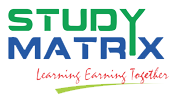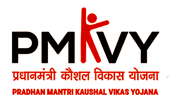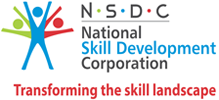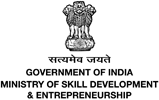- June 12, 2025
- world_news
- No Comments
SEO Glossary of Terms Beginner’s Guide to SEO
Another great source of keywords with featured snippets is the so-called “People also ask” box that often appears below the featured snippet. They would normally appear on the 2nd, 3rd or even lower position. The biggest advantage of having a featured snippet is that you can “outrank” your competitors even if your page has a lower position. Image alt text (also called alt tag) is a piece of text in the HTML code that describes the image and appears if the image can’t be loaded. You can either do it manually and try to find the best ratio between quality and file size or automate the whole process with a plugin (e.g. Imagify, ShortPixel, Tiny PNG).
Internal Link
The primary goal of SEO is to drive organic (non-paid) traffic to a website by improving its relevance and authority in the eyes of search engines. Link building is an essential off-page SEO technique that aims to increase the number of high-quality inbound links to your website. These backlinks serve as endorsements from other reputable sites, boosting your website’s authority and credibility in the eyes of search engines. Effective link-building strategies include guest blogging, influencer collaboration, and creating compelling content that naturally attracts links. By focusing on acquiring quality backlinks, you can improve your website’s search engine rankings and drive more organic traffic. Off-page SEO refers to optimization techniques that are done outside of your own website.
By structuring information clearly and implementing semantic SEO principles, websites can improve their chances of appearing in voice search results, especially for long-tail, intent-driven searches. Instead of recognizing them as variations of the same intent, results would be fragmented, often prioritizing keyword-heavy pages instead of truly helpful content. This inability to process conversational queries and user intent made search less effective, something semantic SEO was designed to fix.
SEO tools – which ones do I need?
Every page that matters — your homepage, product pages, blog posts, or landing pages — should have its own unique meta description. Reusing the same one across multiple URLs confuses search engine bots and weakens your ability to target specific search intent. Unique descriptions help match each page with the right query — and that’s what drives qualified, high-intent traffic. It’s equally important to note that internal links are not just for navigation; they provide search engines with contextual signals. When linking pages, use descriptive anchor text that reflects semantic keywords rather than generic phrases.
- On-page or on-site SEO refers to procedures that aim to optimize individual pages.
- The most important topic that you need to learn in this SEO Tutorial is how does this SEO search optimisation works.
- These activities give you the opportunity to showcase your expertise and reach new people.
- Whether you’re just getting started with SEO or looking to refine your existing strategy, having the proper support can make all the difference.
- The more quality content you produce, the more that the search engines have to read and understand what your site is about and how you help consumers.
- The main types of SEO are on-page SEO, off-page SEO, technical SEO, and local SEO, each focusing on different optimisation aspects.
Offer value by providing an alternative to a broken link on their site or suggesting a compelling content idea (that you’re willing to write). When using different SEO tools like SEMRush, Ahrefs, and Google Search Console, pay attention to new features or updates to existing features that you can use to improve your SEO marketing efforts. For example, SEMRush offers a Google Chrome extension called PageImprove, allowing you to make quick SEO improvements from your browser.
Enhanced search listings can bring you more traffic by standing out on SERPs, or by adding your store to local search results and in Google Maps. As you can see, there are a lot of things you can do to make your content search engine-friendly. You’ll find BHS Links these and many other actionable tips in our checklist on how to optimize your blog posts for SEO like a pro. Finally, you might be interested to learn that there is a growing number of excellent AI SEO tools that you can use to optimize your website. These powerful programs are trained with a massive amount of data to make SEO a breeze.
Google and Bing catalog, index, sort, and arrange all web pages on the Internet to deliver the best search experience for users. You can use tools like Google Analytics, Google Search Console, and Ahrefs to monitor your progress. Depending on your business, you may find it challenging to track the full results of your SEO strategy.With professional SEO management, you can resolve this problem. Even if you decide to bring your SEO management in-house, you want to establish a routine schedule for checking and measuring your strategy’s performance. A monthly or weekly basis is the industry’s standard, which is why many businesses follow this schedule. With data from your website, you can measure your SEO strategy’s performance.
According to studies, more than 70% of search engine users are more likely to click on one of the top 5 suggestions in the search engine results pages (SERPS). SEM (Search Engine Marketing) has the broadest scope of those three, encompassing generating traffic from organic search (SEO) and paying for traffic with PPC search ads. If you’re an Ahrefs user, you can also use the Indentify intents AI feature to see the type of search intent that gets the most traffic. At the same time, the best kind of topics are the ones that hold business value to you. Otherwise, you’re unlikely to attract potential customers through SEO. To give you the most useful information, Search algorithms look at many factors, including the words of your query, relevance and usability of pages, expertise of sources and your location and settings.
They’re pieces of code tucked in the “” section of your webpage’s HTML. Organic Searches refers to unpaid listing in Search engine result page (SERP). These results are based on multiple factors such as keyword relevance, domain authority, page authority, backlinks. The majority of search engines offer advice on how to raise your page rating, but the precise algorithms are closely guarded and often updated to prevent abuse. More and more users are using their mobile phones to search for information or products while on the go.

 +91 92155 56156, 92159 08888,
+91 92155 56156, 92159 08888,  studymatrixhsr@gmail.com
studymatrixhsr@gmail.com 



